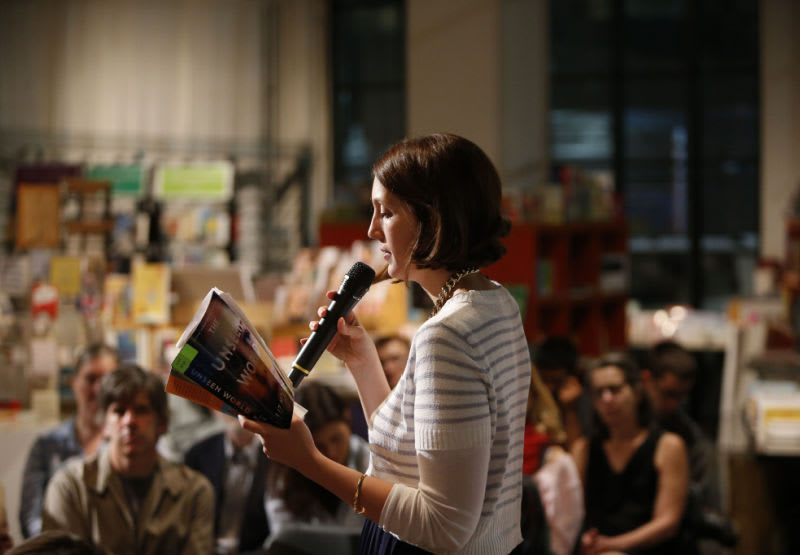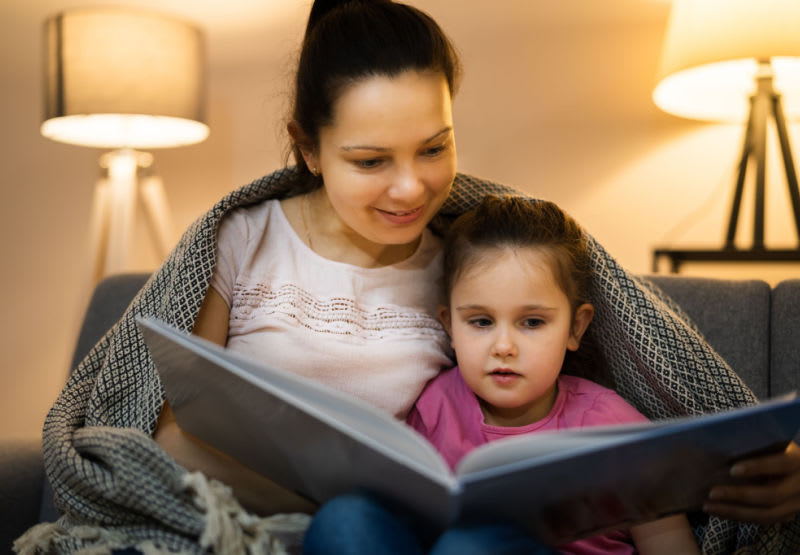How to Illustrate a Children’s Book in 8 Steps
Turn your children’s book into an enchanting tale by working with an artist. Learn how to illustrate a children’s book below.
 June 6, 2023
June 6, 2023 15 minute reading
15 minute reading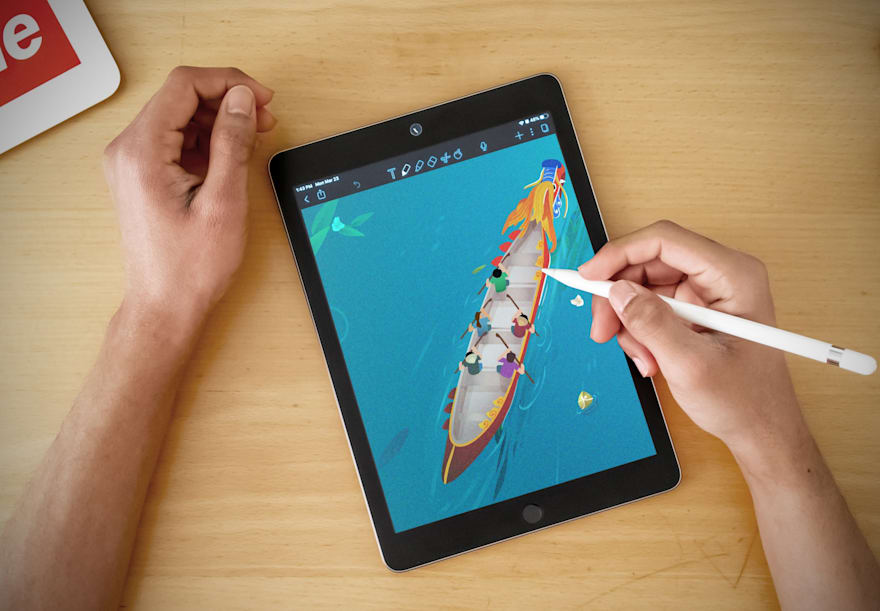
Illustrating a children’s book, whether your own or someone else’s, is a rewarding accomplishment, but where exactly do you start?
From collaborating with authors to adhering to strict briefs and more, it seems as though the process is a whole world in itself.
We’ve written an in-depth, step-by-step guide on how to illustrate a children’s book for the first time. Ahead, you’ll learn the entire process, from finding a story idea to getting the book cover design sorted, so when it comes to your children’s book, you’ll hit the ground running.
How to illustrate a children's book?
1. Find inspiration for your story
Gathering inspiration plays an important role in any creative project, but many can find it difficult just to know where to start. While some can quickly become overwhelmed by inspiration overload, others become frustrated, just waiting for something—anything—to spark their story idea.
During your inspiration phase, it’s important that you keep a notebook handy or use an app on your phone to record any observations or thoughts that come to mind. You may not think it’s special at the time, but when you go over your notes in the coming days or weeks, an entry may just turn into a successful children’s book idea.
Here are some tips to help you find some inspiration for your story:
Decide on your audience age range: While a children’s illustration already has a defined target market, narrow this down to a specific age range. Books aimed at toddlers are very different from those aimed at children starting school. According to Janice Hardy’s Fiction University, “Picture books should appeal to ages 3-8, but the age of your target audience is really determined by how complex the story is and how much text is involved.”
Think like your audience: Once you decide your readers’ age range, learn their main interests and common obstacles. Research how they interact with picture books, including story themes and popular illustration styles.
Look at other children’s book illustrations. Remember, the aim here isn’t to copy other children’s book illustrations, but rather to get your own creativity flowing. Are you drawn to a particular illustration style, color scheme, or genre? Record your observations and see what inspires you.

Illustration style from Pro Fiverr Seller @joneho
In the words of Helen Keller: “Alone we can do so little; together we can do so much.”
When seeking inspiration for your children’s book, don’t be afraid to reach out to friends, family members, or those already working in the book industry. Ask for their opinions on your ideas so far, or see if they have any ideas of their own. Children’s books tend to be adventurous, feel-good stories.
Find a book illustrator for hire
2. Create the story brief
Once your inspiration has taken shape, it’s time to put pen to paper (or should we say fingers to the keyboard?) and create a general outline of your story. If you’re working with a publishing house, you may get a brief from an art director or a book editor.
Either way, the aim here is to narrow all your brainstormed ideas down to a single storyboard that has a beginning, middle, and end.
The beginning sets the mood and tone of the story, and the reader is introduced to the main characters, as well as the setting. The character’s goals and main conflict(s) are also highlighted here.
The middle is where a series of events or complications happen. The reader witnesses the main character(s) grow as they try to overcome these challenges. The storyline is built in suspense, toward a climactic point (the most important or exciting point in a story).
The end is the part where the main conflict is resolved, and the loose ends are tied up, leaving the reader with a satisfying ending to the story.
Essentially, your brief contains a summary of your storyline, which you can use when hiring short story writers or digital illustrators to assist with your book, or when approaching a publisher.
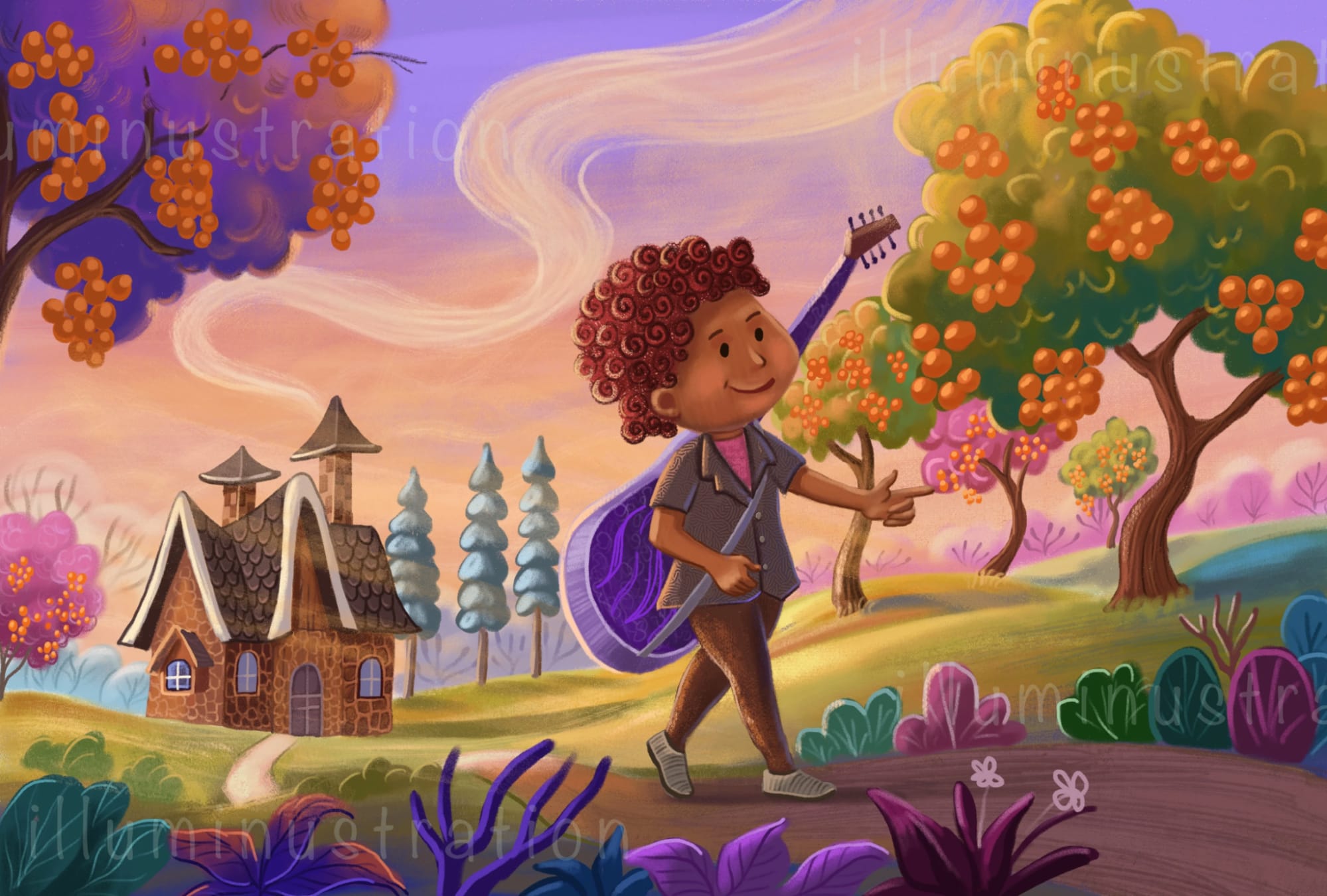
Your main character drives the plot forward. Illustration by Fiverr Seller @iluminustration
If you’re struggling to summarize your story, think about the five Ws:
WHO is involved in the story? Who are the main characters?
WHAT happens to these characters? What do they do? What are they trying to achieve and what obstacles or challenges do they face?
WHEN does the story take place? What is the sequence of events?
WHERE does the story take place? Be as descriptive as you can.
WHY do these events happen? Why does a character act in a certain way?
3. Define your illustration style
You can imagine just how effective illustrations are for young children learning how to read.
According to EBSCO, a research resource, “Picture books for young readers are building blocks that promote literacy, vocabulary skills, sentence structure and story analysis.” However, it’s the illustrations in these picture books that help children understand what they’re reading.
The organization explains: “If children are having difficulty with the words, the illustrations can help them figure out the narrative, which can increase their comprehension.”
This is why the illustrations in your children’s book are just as important, if not more so, than the actual words in your story. Not only do they leave a lasting impression—or memory—on the child, but they also help them develop a sense of self and of the world around them.

Example illustration style by Fiverr Seller @katechirko
When determining what style of illustrations you want in your children’s book, there are plenty to choose from. We explain each of these illustration styles below:
Airbrush: This technique uses a machine that spreads paint using air pressure. Airbrushed images are often more realistic than other forms of illustration and are popular among fantasy and science fiction books.
Crayon: These illustrations are also quite common in children’s books, as they mirror the colorful art that children themselves produce. Because of this, crayon illustrations tend to be more simplistic than other styles. However, this makes them suitable for books aimed at a younger age range.
Comic book: The comic book style has had a long and popular history, with illustrations ranging from abstract to realistic. The most famous comic books can be described as having a Pop Art style, which is known for its bold imagery, bright color palette, and repetitive patterns.
Traditional storybook: When it comes to the traditional storybook illustration style, think back to childhood classics featuring Peter Rabbit and Winnie-the-Pooh, as well as old fairy tales. These had a sketch-like appearance, with soft and muted colors. Unlike the digital illustrations of the modern era, traditional storybook illustrations were done by hand using colored pencils, ink, or watercolors.
Photo-realistic: These illustrations take their inspiration from photographs, causing them to be very lifelike. These illustrations get their appearance from using many different techniques, including drawing, painting, and airbrushing.
Vector art: A form of digital illustration based on geometric shapes. To create vector art, an illustrator must use a vector art program such as Adobe Illustrator. The vector style can be described as colorful, clean, and cartoon-like, a look that children are increasingly enjoying in television shows, movies, and video games.
Portrait: The most skilled portrait illustrators express the personality of each character through an expression, gesture, physical characteristic, or mannerism. This style of art is better suited to books that focus heavily on characters (especially showcasing different characters), rather than scenes or locations.
Watercolor: These illustrations have been created using watercolor paint, which can be mixed with water to create translucent layers of color. This style of illustration is very popular for children’s books, as it adds a whimsical, creative, and enchanting feel to the story.
PRO TIP: Play around with different illustration styles using AI art prompts to find a style that works for you. For example, you can prompt Midjourney or DALLE (AI image generators) with “create an image of a fuzzy, happy monster that travels the universe looking for new plant species in watercolor style.”
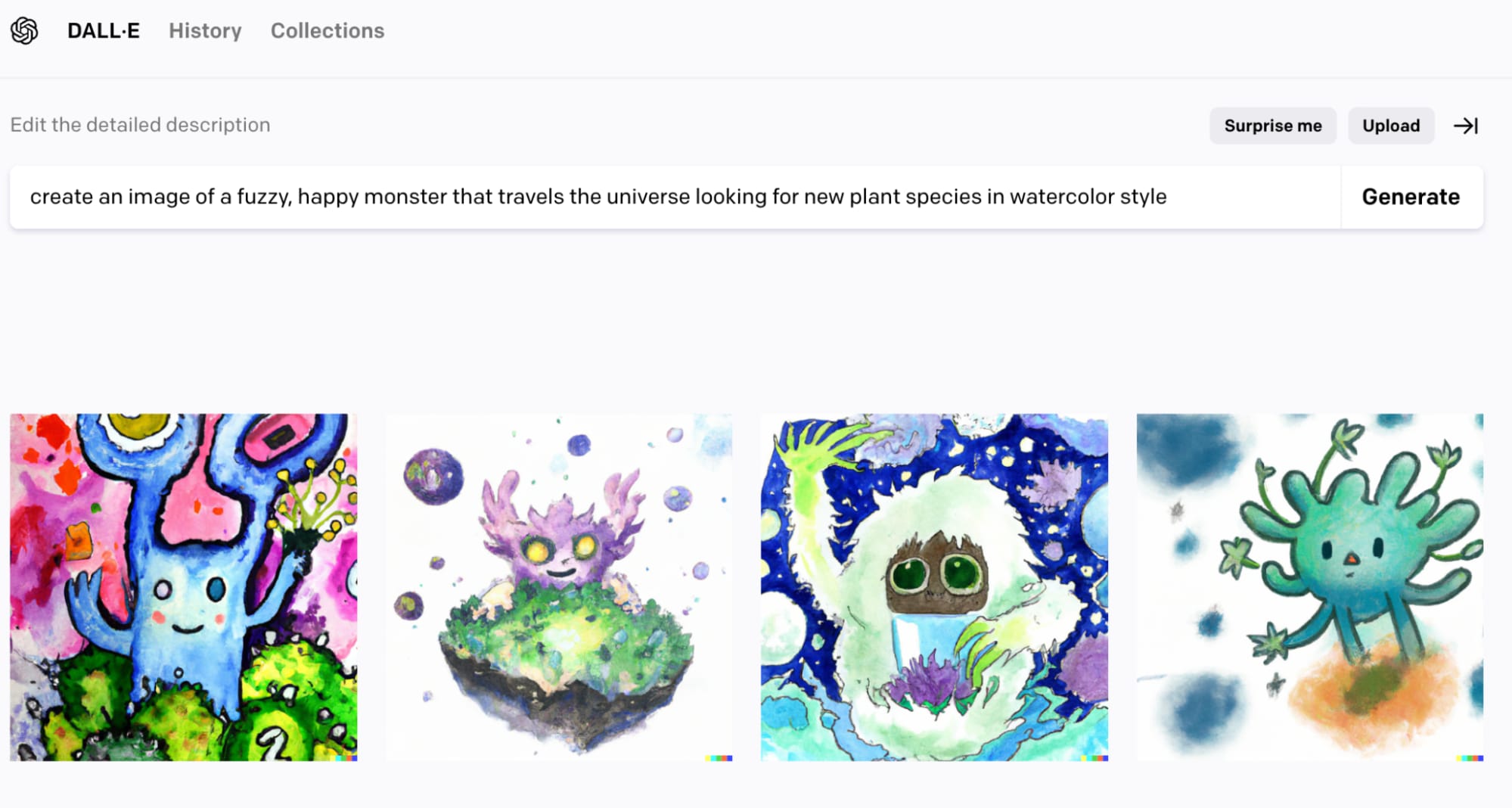
You can get a better idea of what styles you like and will work for your main character. If you want to try another style, simply change the prompt.
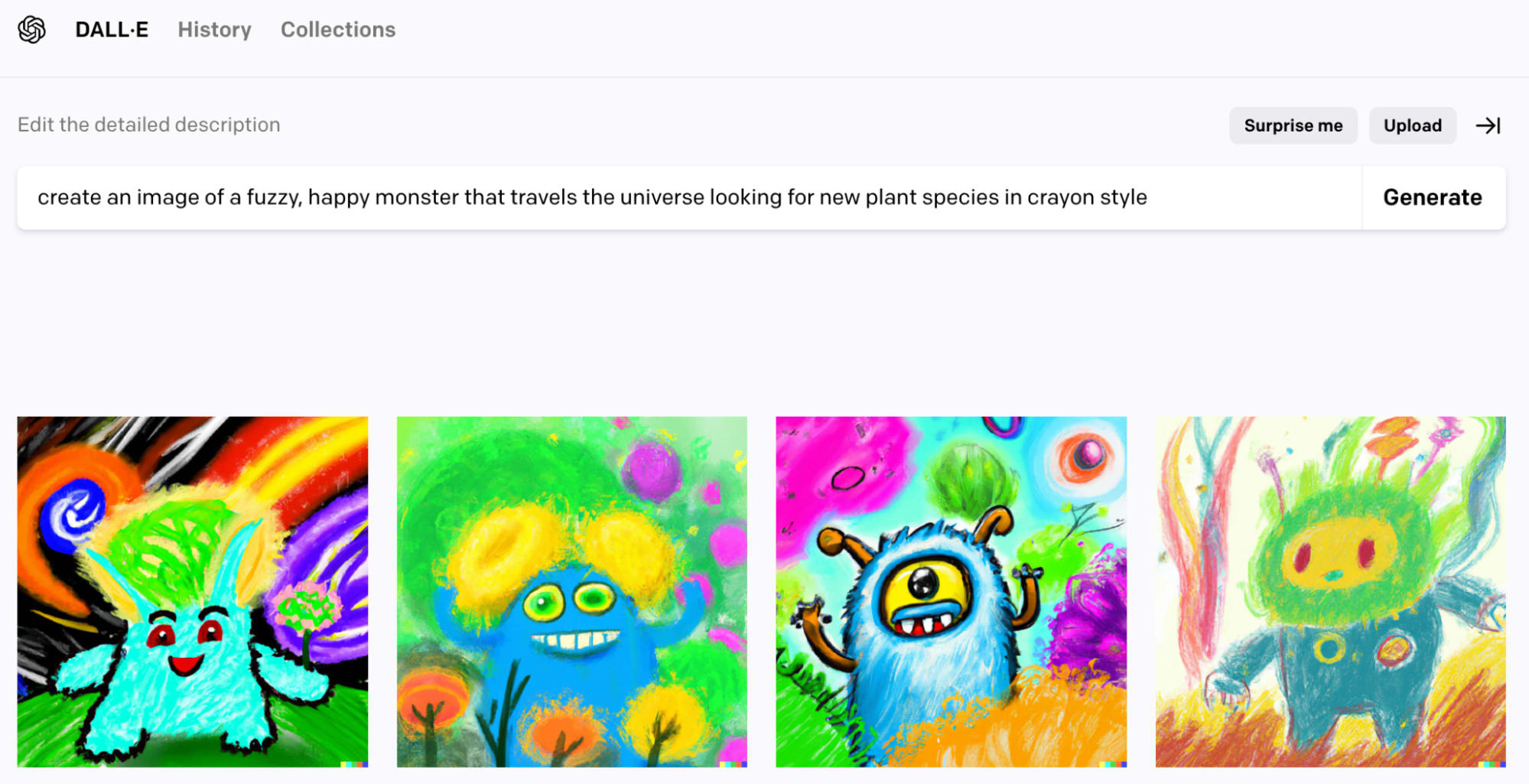
For more tips on prompting an AI, read How to Write Midjourney & other AI art prompts you can actually use.
4. Find a book writer
Contrary to popular belief, a children’s book is one of the hardest formats you can tackle. It’s hard to create a captivating story using simplified language, all without losing meaning, “dumbing” it down, or interrupting the flow of the story.
Thankfully, this is where a children’s book author can help. Those with experience in writing children’s bookmanuscripts know how to write in the correct way to appeal to a specific age range, as well as how to keep their interest and create an emotional response from the reader.
They can also focus on character development and help build out the children’s story so it connects with readers.
Here are some do's and don'ts to consider when hiring a book writer.
DO:
Focus your search on ghostwriters if you wish to have your name, not theirs, as the published author.
Check out their portfolio in length, including looking through their previous work, reading testimonials, and viewing their services and fees.
Be upfront about your expected timeline and respectful with your proposed budge.t
Provide your book writer with the resources (i.e., the brief) and information (i.e., content style, timeline, target audience) they need to write your story.
DON’T:
Be afraid to give feedback. It is your project, after all.
Settle for a writer just because they had the cheapest rates or fastest turnaround. If you want quality, you have to pay for quality.
Fail to communicate with the writer throughout the project to keep up-to-date with their progress.
To determine if they’re the right writer for you, ask them:
Have you written for this audience age range before?
Have you previously worked with these themes?
Have you written any published children’s books? If so, which one(s)?
What would your rate be for this project?
What would your expected timeline be to complete the first draft, second draft, and final draft?
What are your policies or terms and conditions?
Find a ghostwriter for hire
5. Find a children’s book illustrator
While your book writer will bring your story to life with words, your illustrator will make these scenes bounce off the page, taking your reader on a visual journey. Even if you’re self-publishing a children’s book, you’ll want to hire a good illustrator to create the visuals.

Example illustration from Fiverr Seller @taislemos
Here are the do's and don'ts to consider when hiring an illustrator.
DO:
Look carefully at their previous work. Is this the style you want? Is it appropriate for your target audience?
Be upfront and respectable about your budget.
Present the illustrator with a reasonable schedule to complete the work.
Ask if you can see illustrations in their back catalog that suit the general theme of your book and that you might be able to license. These work out much cheaper because the artist has already done the work.
Commission some sample pages first (rather than the whole book) to see if they’re reliable and a good fit.
DON’T:
Ask an illustrator to match the style of another artist—especially an artist you couldn’t hire because they were too expensive or unavailable.
Settle for an illustrator just because they had the cheapest rates or fastest turnaround. If you want high-quality illustrations, they don’t come cheap, nor do they only take days to complete.
Tell your illustrator exactly what you want every image to look like. They’re professionals, so give them creative freedom.
To determine if they’re the right illustrator for you, ask them:
Have you worked with this style of illustration before?
Have you had your illustrations published in a children’s book before? If yes, which one(s)?
What would your expected turnaround be to complete these illustrations?
Once you find an illustrator, make thumbnail sketches for each page or scene in your book. These can also include full illustrations and color samples to show what the new book will look like. They can even help you decide on a font style to improve readability and convey emotion through the text.
6. Get feedback from children
We often think about having other adults critique our work, but when the target audience is children, we recommend going straight to the source.
Once you’ve received the work back from your illustrator, try to show it to as many children in your audience’s age range as possible in order to hear their opinions on it.
Ask them the following questions:
What do you like about this drawing?
Is there anything you don’t like about it?
How does the drawing make you feel?
Do you like the colors and/or patterns used?
Do you think this character is happy, sad, excited, angry, etc.?
Remember: Your target audience is likely very young, so you won’t want to ask them anything too complicated or confusing. Start with basic questions first (Do you like it?) and move up from there to gain a more in-depth response.
If the children are getting mixed messages from your illustrations (such as thinking a character is sad when they are meant to be happy), then you may need to go back to the drawing board—literally.
7. Get sketches for the book cover
Did you know over four million books are published each year? Whether you’re selling books on Amazon or a local bookstore, it will no doubt be surrounded by hundreds of other books, all with their own interesting tale to tell.
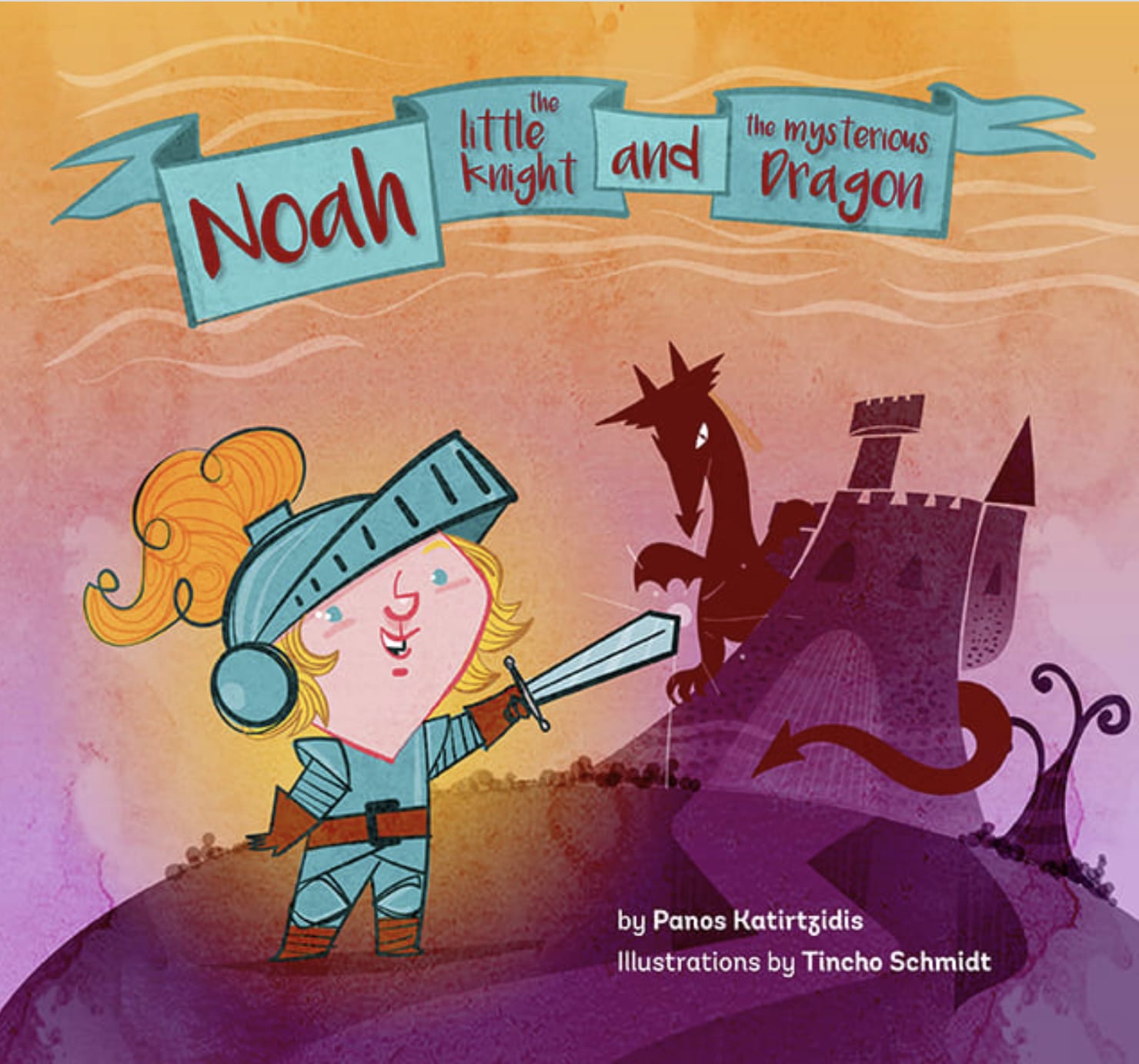
Book cover example from Fiverr Seller @msallas
This is where your illustrator comes in, as it is part of their job to give you sketches of how the front and back covers might look, once designed. These sketches require feedback, and more often than not, will go through multiple revisions before being approved.
Designing a book cover from scratch isn’t to be taken lightly, nor is it a task that an illustrator can complete within just a few days. That’s why you want to hire a professional book cover designer from Fiverr to get it right.
There are several important factors a book cover should have, all of which we discuss in more detail below.
Title: This is the most important text on your front cover, so you’ll want to consider the message it sends to readers, as well as its size and typography. Your title should be large enough to make it easily readable from across the room, while the fonts you use should highlight the meaning of a book’s title or build upon key themes or moods.
Emotion: If your cover doesn’t evoke emotion in the viewer, then sadly, you’ve lost them from the get-go. Whether it’s the artistic style, the tone, or the small glimpse into the storyline, you want them to feel that twinge of excitement, curiosity, or inspiration before they’ve even read the blurb.
Uniqueness: Your book is your own vision and it isn’t the same as any other publication out there. Highlight this uniqueness in your cover design to get people excited about this new reading experience. After all, if your book cover looks like every other book cover, how will it ever stand out?
Impact: The images and illustrations on your front cover aren’t just there for artistic flair—they need to make an impact on potential readers. You want your book to instantly catch someone’s eye and have them pick it up (or click through) to learn more. Think bright colors, experiment with composition, or use size to your advantage.
Genre appropriate: Have you noticed most children’s book covers use bright colors, cute illustrations, and playful typography? This is to mirror their genre: light-hearted, fun, and innocent. Use visual cues like fonts and colors to suggest what your book is about and pick genre-appropriate (i.e., kid friendly) imagery.
Professional: Hire a freelance illustrator or graphic designer who understands the power of subtle elements, such as lighting, image arrangement, and treatment. Show your reader that you—and your book—have the resources and means to do this work professionally, not at the hobby level.
Looking for book cover inspiration? Read 15 Book Cover Design Ideas to Grab Readers’ Attention.
8. Lay out the final artwork and text
Now that you’ve got your artwork and text, it’s time to combine the two.
If you’re working with a publisher, they’ll give you an award-winning (hopefully) book designer to help.
If you’re doing it on your own, you’ll need to layout and resize the artwork to fit your book trim size. You can layout chapter books in Procreate or Adobe Photoshop, but you’ll likely need a tutorial to get a good final product.
Another option is hiring a book designer on Fiverr, especially if it’s your first picture book. They will help you lay out the artwork with text and get your ready to publish a children’s book.
Before submitting your book for publication, ensure that your illustrations are formatted correctly and meet the publisher’s requirements. You may also want to consider hiring a professional to proofread and critique your work. Their keen eyes can catch any errors or inconsistencies you might have missed.
Find an illustrator
Create a children’s picture book today
There are many steps involved in illustrating a children’s book so that it is successful once it hits the shelves.
Creating an attention-grabbing cover, communicating what the book is about, and attracting your target audience all rest upon the visual components of the book, so it’s important that you have a trusted and experienced illustrator on board.
By taking the actions outlined above, the process of writing your own book—or working with an illustrator to do so—is sure to go a lot smoother. Remember, the difference between success and failure is a great team, so use this collaboration to bring your passion for children’s literature to life.
Want to get your children’s book moving? Hire a children’s book illustrator today on Fiverr.
Illustrating a children’s book FAQ
How do you illustrate a children’s book for free?
To illustrate a children’s book for free, you can use free graphic design tools like Canva or free vector graphic software like Inkscape. Also, there are many free online tutorials that can guide you through the illustration process to create a book.
How do you illustrate a children’s book when you can’t draw?
If you can’t draw, collaborate with a children’s book illustrator from the Fiverr marketplace. They can help you choose the best style for your book and create the final product.
How do you write an illustrated children’s book?
Writing an illustrated children’s book involves writing a simple, engaging story and planning where the illustrations will go. The illustrations should complement the text and help to tell the story. You might want to sketch out a storyboard to plan the layout of your text and images before you start to finalize your book.
How much does it take to illustrate a children’s book?
Illustrating a children’s book can take between six and nine months to complete. If you hire a book designer from a freelance marketplace like Fiverr, you can get artwork for between $100 and $550 minimum.

